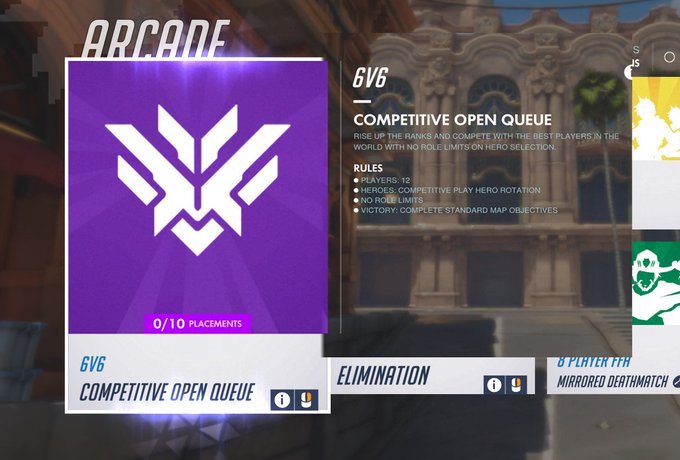On Wednesday, May 6th, Overwatch insider Naeri revealed that the Overwatch team was considering an additional competitive mode into the game. This change would bring back old-school competitive open queue play with no role locks. If passed, the gamemode could potentially replace the current mode as the new standard of ranked play.
Of course, this change is not new, but rather a revert back to what Overwatch ranked play was like prior to the end of 2019. At the time, the infamous GOATs (triple-tank, triple support) meta plagued the game, suppressing any other compositions from competitive viability. Many players and fans believed that the role locks of 2 damage, tank, and support players per team would finally save the game. However, concerns over the currently ‘stale’ or unenjoyable metas factor into this new decision.
When open queue was introduced into the arcade with Echo’s release, the gamemode quickly gained popularity from fans. But making this gamemode a mainstay— and a competitive one, at that— brings both advantages and disadvantages to Overwatch.

Pros: Increased flexibility
In previous metas, we’ve seen Overwatch players have the option to change roles mid-game. During the early days of Sombra’s release, for example, support players would often swap off of the usual rotation of healers to opt into the aggressive hacking hero. Additionally, flex-tank players could also swap to other non-traditional roles such as Mei or even Pharah. With the implementation of competitive open queue, players will be able to showcase their versatility on a variety of heroes, and use their adaptable capabilities to their advantage.
Pros: Shorter queue times
With the integration of role queues led to a steep spike in increased queue times. This was a prominent majority for DPS players, with wait times that would often take at least 10 or more minutes. If competitive open queue becomes the new norm, players of all positions will be able to enjoy faster matchmaking and jump into their next match much more quickly.

Cons: Less than ideal compositions
The first and foremost issue that competitive open queue brings is definitely the lack of a guaranteed tank or support player in the game. With a majority of players preferring to play DPS heroes, it may be difficult to find decent compositions or strategies within lower-level ranked matchmaking. On the flipside, things like the GOATs meta can emerge, gridlocking the meta and preventing players from enjoying open queues. Without a specific limit to each role, bad team comps can become all too common within ranked matches in Overwatch.
Cons: Elo hell
One undeniable strength of ranked queues is the separation of skill ratings between roles. This means that players can focus specifically on their best role to rank up, even if their elo in other roles aren’t as great. This is not possible in open queues, which lump performances on all roles into consideration to a single skill rating. For players who are constantly forced to fill into other roles, this can be a frustrating issue when attempting to raise their competitive ranking.
Conclusion
All aforementioned changes are subject to being implemented into the game. Blizzard and Overwatch have yet to make official announcements on these future updates. What do you think is best for Overwatch’s competitive game modes? Let us know @SlashShout!





Loading…